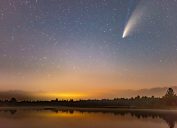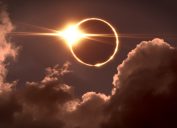New Forecasts Show "Severe Storms" Could Strike These Regions During Monday's Total Solar Eclipse
Some areas might get hit with extreme weather around the time of the big event.
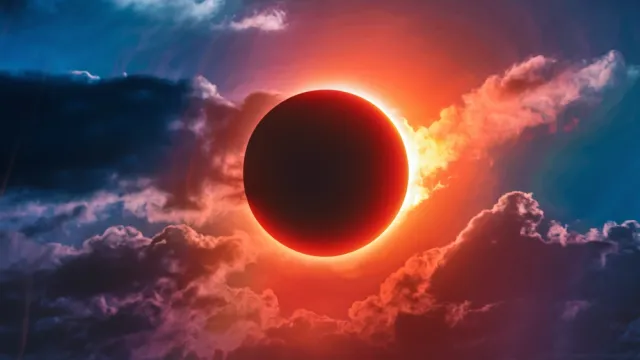
With the total solar eclipse less than a week away, the tens of millions of people expecting to take in the event are beginning to see if their hard planning will pay off as weather information begins to come in. After all, there's always the chance that it could end up being cloudy someplace, despite what the long-term odds predict. But now, more accurate forecasts are available—and it appears that some regions could get hit with "severe storms" during Monday's total solar eclipse. Read on to see how the weather could play out and if your arrangements will be affected.
RELATED: Green "Mother of Dragons" Comet Now Visible in the Sky—How to See It.
Parts of the South and Plains States could see severe storms roll through the area on April 8.
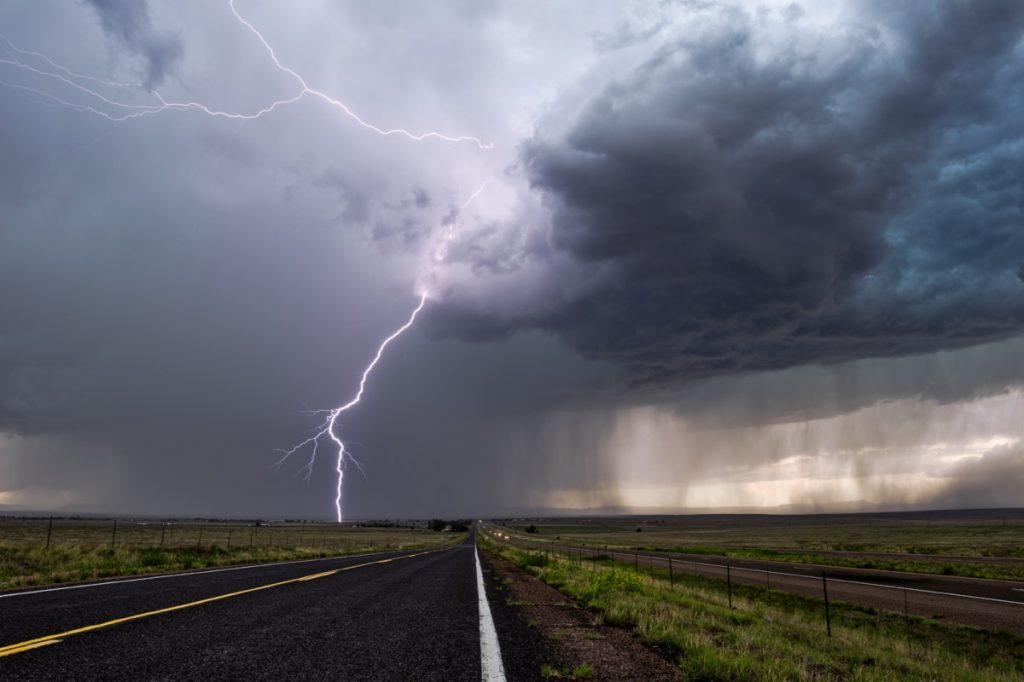
No one likes the idea of bad weather ruining important plans. But if you're one of the many looking forward to witnessing the last solar eclipse visible in the U.S. for roughly two decades, you might be in store for some extra disappointment.
New forecasts show that conditions are in place for scattered thunderstorms to develop in parts of the Plains States and the South on Monday right along the path of totality, Fox Weather reports. Data currently shows an area covering southern Oklahoma, southwestern Arkansas, northwestern Louisiana, and a large portion of northeastern Texas with "possible" or "likely" outcomes of "severe storms" on Monday.
Ironically, much of the area that could get rained out—including the Dallas-Fort Worth area, a major tourist destination and gathering place for the event—was originally slated to be one of the safest bets for avoiding bad conditions during the solar eclipse out of anywhere in the U.S.
"This is something that people from all over the world travel to see," Stephen Morgan, a meteorologist with Fox Weather, said during an update. "And if you go based on climatological norms—20-to-30-year averages—Texas is the hot spot to be because that is where normally cloud cover is the least [along the path]."
RELATED: Here's Exactly When You Can Look Directly at the Solar Eclipse, NASA Says.
There's still a chance the extreme conditions will develop too late to block out the experience.
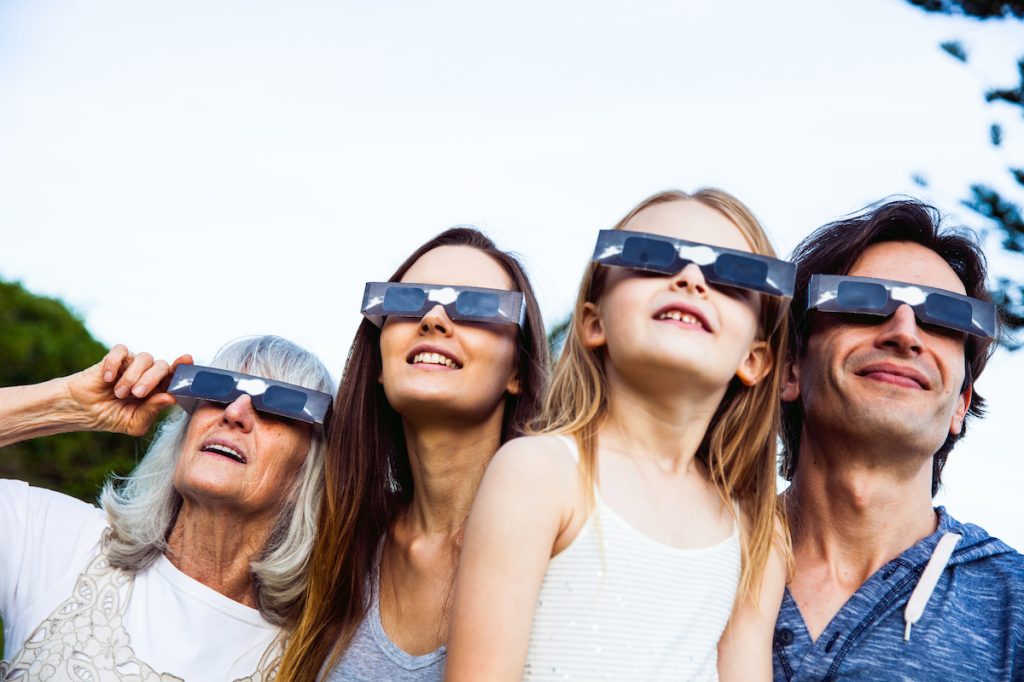
Though incoming weather data now paints the possibility of a stormy day, that doesn't necessarily mean that all hope is lost. There's still a chance that the approaching low-pressure system might hold off until the afternoon, potentially missing the 12:23 p.m. start of the partial eclipse and the 1:40 p.m. beginning of the four minutes of totality, per Fox Weather.
But experts are still warning that visibility may drop even before thunderstorms and severe weather arrive.
"This is quite a window for folks living in Dallas [and] for folks traveling to Dallas—and all you need is that four-minute window when you don't have the clouds in front," Morgan explained. "And how many days have you seen where clouds develop, and you still have the sun—a mix of sun and clouds? So I'm going for that perfect forecast."
RELATED: 25 Solar Eclipse Facts That Will Blow Your Mind.
Cloud cover could be problematic for other popular eclipse destinations.

The approaching date also means that other places along the path of totality now have a better idea of what their conditions will be. And unfortunately, some cities might be in for less-than-ideal viewing weather.
Forecasts now show that eastern Texas and southern Arkansas face a high risk of cloud cover on Monday, according to AccuWeather. Moving north, a moderate chance of cover is predicted in Missouri, Illinois, and Tennessee—as well as in Indiana and Ohio, which are squarely in the path of totality.
Western Pennsylvania and western New York—including Rochester and Buffalo—are also more likely to have cloud cover. However, only moderate chance of coverage is forecast for eastern New York, while low cloud risk is expected in Vermont and Maine. This twist of irony puts some of the historically worst places for cloud cover at a slight advantage if the forecast holds.
Outside the path of totality, southern Florida, the central Midwest, the northern Plain States, parts of the Rockies, and the Pacific Northwest coast also have a high risk of cloud cover. Meanwhile, the Eastern Seaboard is forecast to have low risk.
Experts say it's still a worthwhile experience, regardless of the weather.
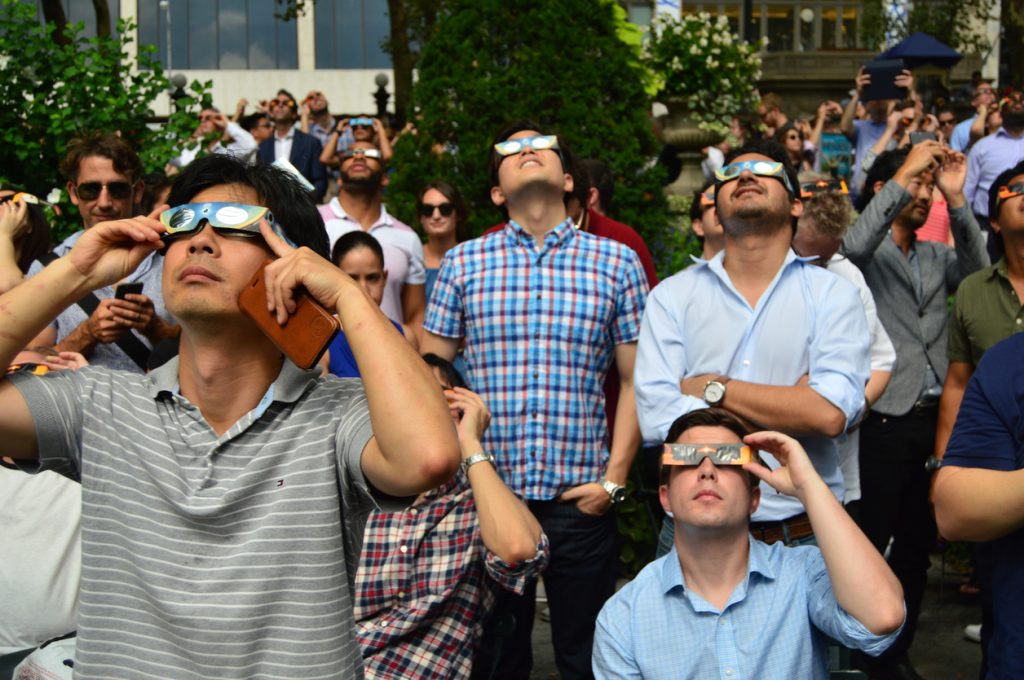
After months of planning for the eclipse, you may be dismayed by the possibility of the elements foiling the view. But even in non-sunny conditions, it's likely to be quite a spectacle.
"Clouds are actually fun," Seth McGowan, president of the Adirondack Sky Center and Observatory in Tupper Lake, New York, told North Country Public Radio (NCPR). "During an eclipse, the changes in the atmosphere are so severe that oftentimes it results in thunder and lightning, or hail, even. It still gets pitch dark, but you get these amazing colors around the horizon, so the only element that's missing during a total eclipse under clouds is the actual visual of the corona. I will say that there's nothing that can beat that."
And whatever the forecasts might say, McGowan says it's certainly not worth ditching the experience.
"Just because you think it's going to be cloudy where you're headed, don't not go," he told NCPR. "Don't stay inside, because the experience is equal, just in different ways. You may not see the corona, but you're going to have an experience that you just wouldn't have anywhere else or in any other way. The clouds would be unwelcome, but we'd make our peace with it because the trade-off is equally mystifying."



